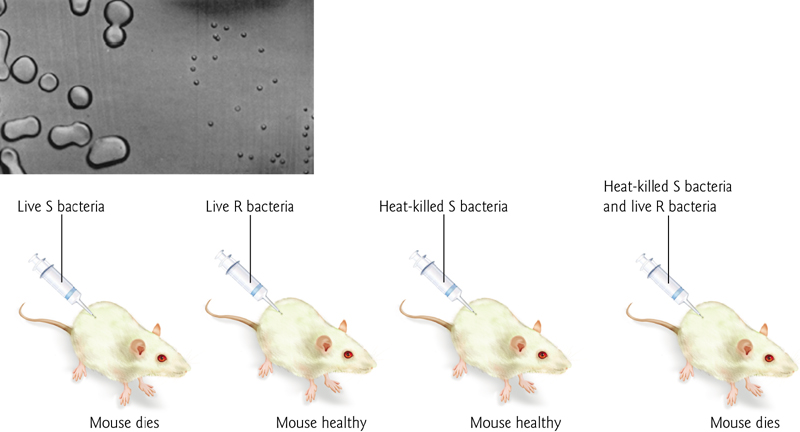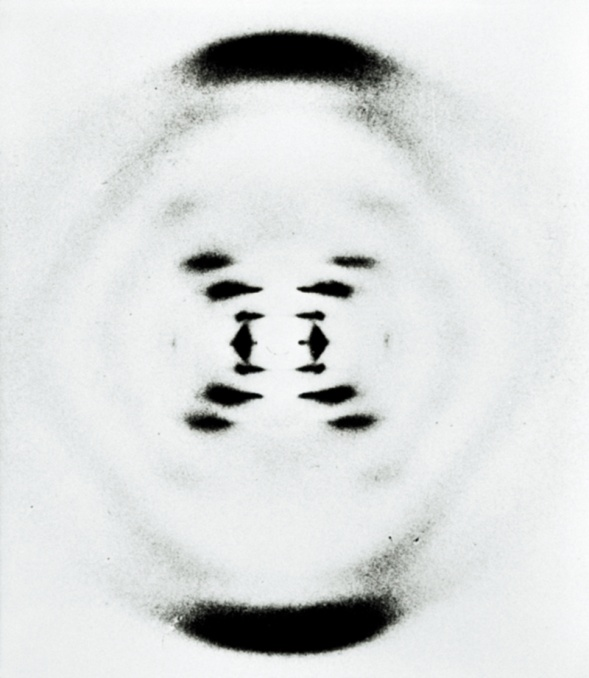L01 Introduction
一、Introduction
A historical perspective on molecular biology
1941 One gene encodes one protein (Beadle and Tatum).
1944 DNA is the molecule that mediates heredity (Avery, MacLeod, & McCarty)
1946 Genetic material can be transferred between bacterial cells (Lederberg & Tatum)
1950 In DNA, A = T, and C = G (Chargaff).
1952 DNA is the molecule that mediates heredity (Hershey & Chase). This confirmation of the 1944 results convinced everyone.
1953 DNA is in the shape of a double helix with antiparallel nucleotide chains and specific base pairing. (Watson & Crick)
1958 DNA replication is semi-conservative, (Meselson & Stahl)
1959 Messenger RNA is the intermediate between DNA and protein.
1966 The genetic code is cracked.
1970 The first restriction enzyme is purified by Hamilton Smith.
1972-73 Recombinant DNA is first constructed by Cohen & Boyer.
1977 DNA sequencing technology is developed by Fred Sanger.
1986 PCR is developed by Kary Mullis.
1990’s Genome projects begun.
Rapid progress in molecular biology was and is made due to:
- wise choices of relatively simple model organisms.
- the development of biochemical and physical methods for studying specific molecules.
- the widespread application of a set of logical principals for designing experiments and interpreting data.
The Logic of Molecular Biology
- Most biological processes work in the most efficient manner (parsimony(节俭) & simplicity are intuitively favorable).
- Phylogeny matters – organisms are related and molecular mechanisms are conserved.
- Quantitative relationships underlie most measurable phenomena.
- Conceptual models can be used to understand molecular phenomena.
- Data from simple model systems can be applied to complex organisms.
- Intuition can be used to infer the best explanation, along with exclusion of all other reasonable possibilities (based on experimental data).
- Optimism that reductionist approaches will solve higher-order problems.
The idea of a “model system”
Model systems:
- used to study basic biological functions in a known organism.
- can be studied in diverse labs, with data transferable to other labs using the same system under the same conditions.
- discoveries have broad relevance in many related systems (e.g. basic functions in Arabidopsis are similar to those in maize).
- have one or more important features that made them so useful, such as a small genome, small size, fast reproduction time, or can be easily made transgenic using recombinant DNA techniques.
- Have a wealth of available data – such as genome sequence, methodologies, etc.
What is molecular biology?

一、Some Important Discoveries
Transfer of hereditary material
1928, Frederick Griffith shows that hereditary materials can be transferred from dead cells, using transformation of Streptococcus pneumoniae

One gene-one enzyme
1941, Beadle and Tatum (Beadle was trained as a maize geneticist) demonstrated the link between genes and proteins by showing that a single genetic mutation could block a single step in a metabolic pathway.
1958 winners of the Nobel Prize in Physiology or Medicine

Hershey-Chase
1952, the genetic material of a bacteria-infecting virus is DNA, not protein.
1969 winners of the Nobel Prize in Physiology or Medicine

Watson & Crick – DNA has a double helix
1953, proposed double helix structure of DNA, based in part on X-ray diffraction performed by Rosalind Franklin (below)
